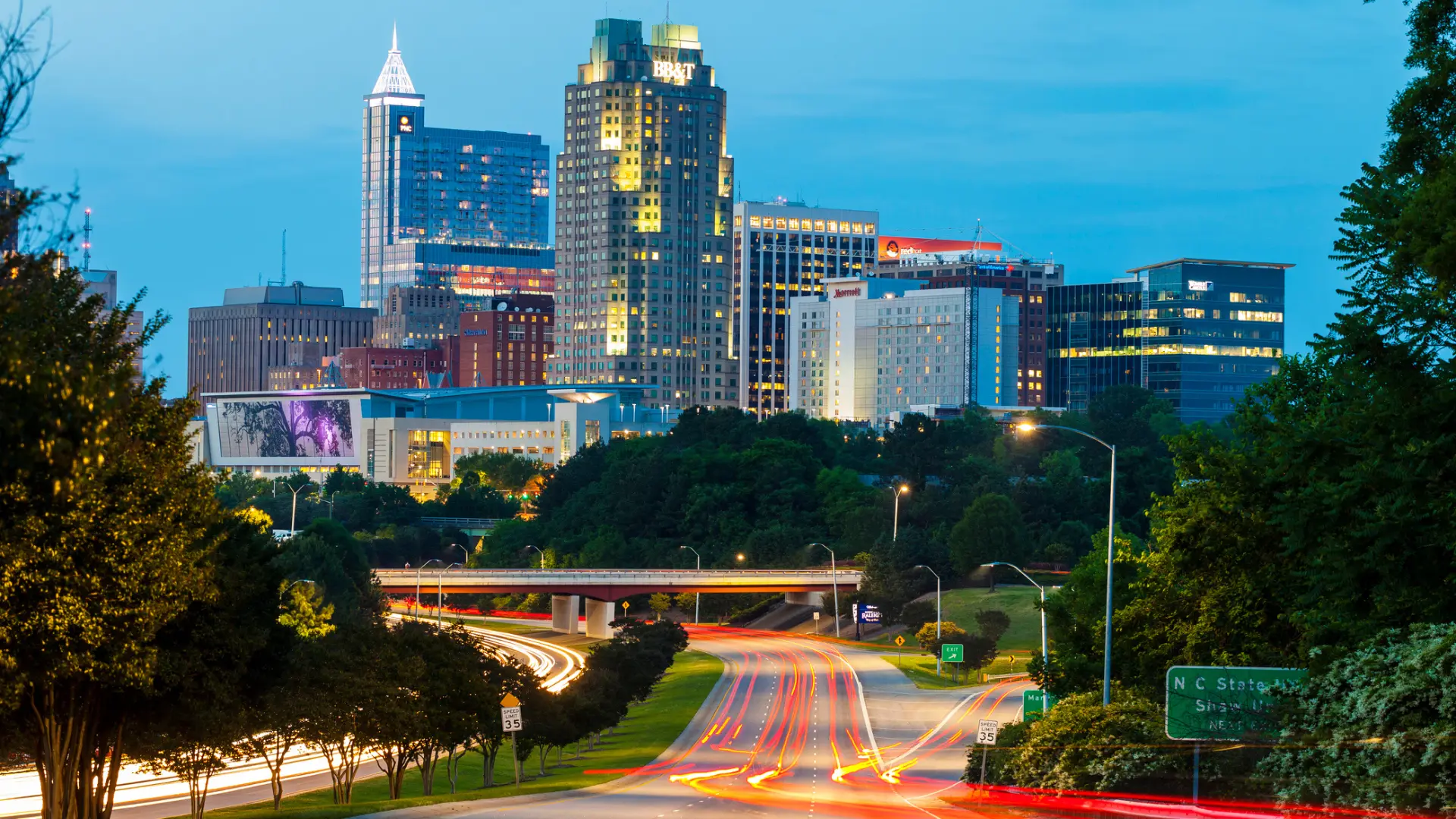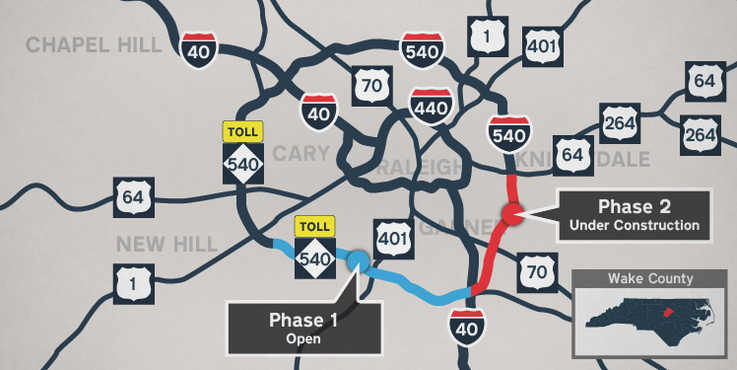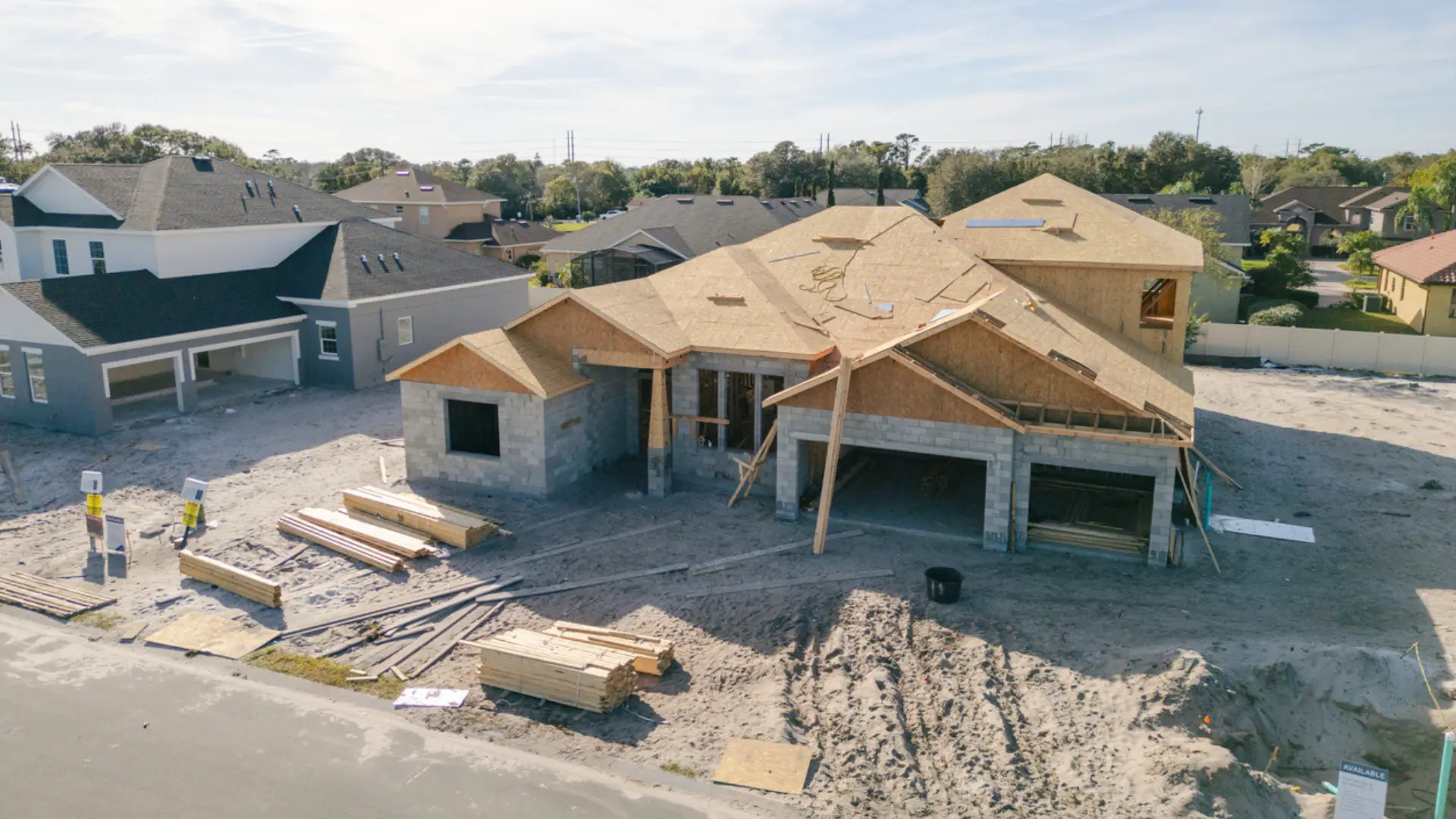How the finished I-540 will improve life in the Triangle

Commuters from the eastern and southern communities of the Triangle will soon have an easier way to get into the cities where they work and play. The North Carolina Department of Transportation (NCDOT) is in the process of finishing its Complete 540 project, known as the Southeast Extension. This $2.5 billion project extends the Triangle Expressway from Apex into Knightdale and will complete the I-540 Outer Loop around Raleigh.
Benefits of the extension
The Southeast Extension will be beneficial to the parts of the Triangle that are growing by the greatest numbers. For example, Johnston County and southern Wake County residents will now have better access to Raleigh-Durham and a faster commute. Currently, Johnston County Economic Development reports that more than 90,000 Johnston County residents drive outside their cities to work — largely to Wake County. As new jobs come to the Triangle and real estate continues to push into its suburban and rural communities, it’s expected that numbers like those of Johnston County will increase significantly.
Also, traffic congestion will be significantly reduced on the region’s major throughways, including I-440, I-40, NC 42, NC 55, and Ten-Ten Road. NCDOT has long been planning the Southeast Extension to help improve congestion concerns. The state agency began its planning studies in 2009 and published its reports in 2013.
While census data showed the Triangle grew significantly between 2010 and 2020 — 28 percent in Johnston County, 25 percent in Wake County, and 21 percent in Durham County — the next several years could see those limits pushed even further. Several Triangle-area cities were already among the fastest-growing communities in the nation between 2020 and 2024. With North Carolina on pace to be the seventh most populated state in the country by 2030, that growth will only continue for the foreseeable future.
The extension will connect the communities that showed the most significant growth in the Triangle, including Raleigh, Apex, Cary, Clayton, Garner, Fuquay-Varina, and Holly Springs.

The first phase is complete
Phase 1 of the Complete 540 project officially opened for traffic on Sept. 25, 2024. The first phase was constructed in three sections, first extending the N.C. 55 Bypass to east of Pierce Olive Rd. The second section added to the expressway from east of Piece Olive Rd. to U.S. 401. The final section, which added an extension from U.S. 401 to I-40, completed the first phase.
The first phase, an approximately $1.3 billion investment, added new interchanges at Holly Springs Rd., Bells Lake Rd., U.S. 401, Old Stage Rd., and N.C. 50. It also completed the N.C. 55 bypass interchange in Apex and partial construction of the Toll N.C. 540/I-40/I-42/turbine interchange at Garner.
The Southern Extension has six travel lanes and a posted speed limit of 70 miles per hour.
Phase 2 is now under construction
The North Carolina Department of Transportation broke ground on Phase 2 of the Complete 540 project in May of 2024. The first section will extend the Triangle Expressway from I-40/U.S. 70 to south of Rock Quarry Rd.
The final piece of the I-540 project won’t begin until 2027. This construction will complete the road along I-40 to the U.S. 64/264 Bypass, increasing the current loop by 28 miles and finishing off the existing 42-mile-long road around North Raleigh.
When complete, the highway will be a tolled, limited-access road. Three 12-foot lanes will allow drivers to travel at 70 miles per hour and will provide direct access to the Research Triangle Park and Durham via I-40 and to U.S. 64/US 264 east of Raleigh, all along the Wake/Johnston County line.
Transportation improvements throughout the Triangle
Leaders in the Triangle are also developing additional plans to help with traffic congestion. Feasibility studies show residents across the Triangle have three major concerns regarding transit: they expect reliability, reduced congestion, and increased connectivity.
In addition to the Southeast Extension, GoTriangle is taking on major initiatives that will increase connectedness. Those initiatives include a commuter rail system, which is expected to take as many as 10,000 riders per day across Raleigh, Durham, the Research Triangle Park, and a rapid transit bus system. Those projects are currently in planning stages and will likely not be operational until 2030.
Final thoughts
As the Triangle cements its place as one of the fastest-growing regions in the nation, infrastructure like Complete 540 plays a critical role in shaping what that growth looks like. The project isn’t just about cutting down commute times. It’s about building the framework for continued mobility, economic vitality, and quality of life. By connecting communities across Wake and Johnston Counties with faster, more reliable access to jobs, schools, healthcare, and recreation, the Southeast Extension helps ensure that the region’s growth remains sustainable and connected for decades to come.



